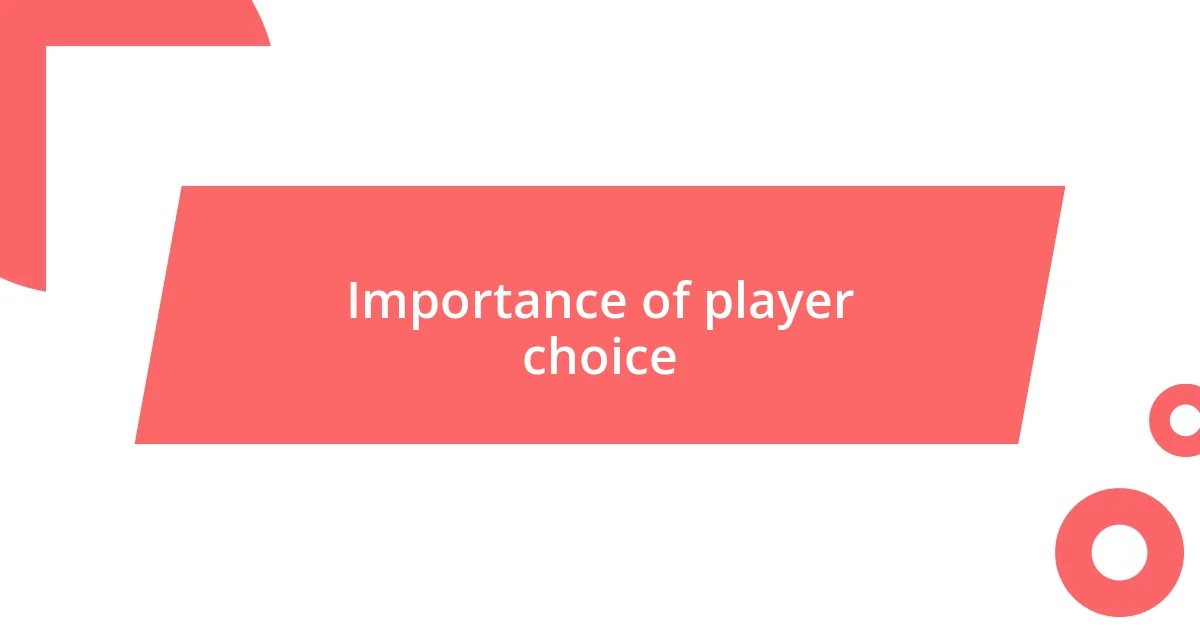Key takeaways:
- Multiplayer narratives allow players to shape the story through collective choices, enhancing emotional depth and replayability.
- Collaborative storytelling fosters strong emotional connections and friendships through shared experiences and challenges.
- Future trends in multiplayer games involve more personalized and evolving narratives through AI integration and player-driven storytelling.

Understanding multiplayer narratives
Multiplayer narratives create a dynamic storytelling environment where players interact with each other, shaping the plot through their choices. I remember the first time I joined a co-op RPG; the excitement of not just following a set story but actively influencing it with friends was exhilarating. It posed a question: how do our collective choices redefine the meaning of a narrative in gaming?
In these experiences, the emotional depth often emerges from shared triumphs and failures. I find that moments of victory, when we all collaborate to take down a tough boss, weave a story that feels uniquely ours. Have you ever felt that rush when a planned strategy comes together, making every player’s role feel significant to the narrative’s progression?
What’s fascinating is how multiplayer storytelling allows for diverse perspectives that single-player games can rarely offer. For instance, each player might interpret the same scene differently, adding layers of complexity to the overall story. Isn’t it intriguing how our individual experiences blend into a richer narrative tapestry, creating friendships and shared memories that extend beyond the screen?

Importance of player choice
The importance of player choice in multiplayer narratives cannot be overstated. I vividly remember a moment in an online game where my team faced a critical decision that could alter the outcome for all of us. We could either forge an alliance with another group or take them down for resources. The tension was palpable, and as each player voiced their opinion, the narrative shifted, making our choices not just significant for gameplay but for how we bonded as a team.
Player choice instills a sense of ownership over the storyline. It’s like being part of a unique play, where each participant adds their flair, driving the plot forward in unexpected ways. I’ve seen how this collective involvement fosters a deeper emotional connection to the game, turning routine missions into memorable adventures. Isn’t it amazing how discussions around our choices even after the game ends can spark new friendships?
Ultimately, these decisions can lead to vastly different pathways and endings within the game, enhancing replayability. I’ve encountered experiences where players return to explore alternative fates, discovering new facets of the story with different companions. This depth of exploration can make every session feel fresh, with personal narratives evolving from our various experiences. How often can we say a game leaves us with such a rich narrative gift?
| Aspect | Single-player narratives | Multiplayer narratives |
|---|---|---|
| Player agency | Limited | High |
| Emotional connection | Personalized | Shared |
| Replayability | Low | High |

Collaborative storytelling in games
In multiplayer gaming, collaborative storytelling takes center stage, transforming players into co-authors of their experience. I recall being in a guild raid where the narrative unfolded as we battled enemies together. The thrill wasn’t just in defeating a formidable foe but in crafting a story that felt like our collective legend—a much more impactful experience than merely watching a cutscene unfold. This kind of teamwork enhances the emotional stakes; we cheered for each other’s successes and consoled each other in moments of defeat, deepening our shared narrative.
- Each player’s input shapes a unique story arc.
- Emotional investments arise from shared challenges.
- Forging bonds through victories and defeats becomes part of the experience.
Engaging in collaborative storytelling can build unforgettable memories. I remember a time when our team miscommunicated during a high-stakes dungeon run, leading to an epic failure. Rather than seeing it as a setback, we turned it into a hilarious story, laughing about it for weeks. These experiences create a strong sense of community, tying our narratives together. What I truly appreciate is how these moments foster friendships, enriching the game far beyond the screen time.

Emotional engagement in multiplayer
Emotional engagement in multiplayer narratives is heavily influenced by the connections formed between players. I often find that when I collaborate with others to achieve a common goal, the excitement amplifies my emotional investment. One time, during a challenging raid, we faced unexpected obstacles that truly tested our resolve. As we cheered each other on through our defeats and celebrated our victories, the sense of camaraderie not only made the experience thrilling but also forged lasting friendships. Isn’t it incredible how shared struggles can bind us closer together?
In multiplayer scenarios, the emotional resonance goes beyond individual triumphs. I remember the moment our team worked together to overcome a boss that seemed impossible to defeat. The initial frustration morphed into relentless determination, and when we finally succeeded, it felt like a collective victory. This sense of shared accomplishment cultivates an emotional attachment not just to the game itself, but to the people you battle alongside. How often do we experience that rush of joy when the hard work pays off, fostering a bond that extends beyond the game?
Moreover, the beauty of multiplayer narratives lies in the diverse perspectives players bring to the table. Each person’s unique background and motivations enrich the experience, transforming it into something deeply personal and engaging. I’ve been in discussions after a game where we dissected our choices and motivations. These conversations often reveal unexpected insights about ourselves and each other, deepening our emotional connections. Doesn’t it feel fulfilling to explore narratives that reflect the richness of our collective experiences?

Analyzing successful multiplayer examples
One standout example of successful multiplayer storytelling is “Among Us.” The game brilliantly illustrates how suspicion and deduction create an engaging narrative. I vividly remember a session where we banded together, trying to figure out who among us was the impostor. The tension in the air was palpable, and as accusations flew, we not only crafted a compelling storyline but also found ourselves invested in one another’s motives. Isn’t it fascinating how a simple game can turn friends into storytellers, weaving a tapestry of trust and betrayal through just a few rounds?
Another excellent case is “Sea of Thieves,” where players embark on pirate adventures that are filled with both humor and spontaneity. I once joined a crew that ended up chasing rival pirates across the high seas. Each chaotic battle became a shared tale, especially when one of my shipmates unintentionally blasted themselves out of a cannon. We laughed until our sides hurt, and those moments became the highlights of our pirate saga. How often do we create memories simply by embracing the unexpected with friends?
On a different note, games like “Destiny 2” showcase how powerful a shared mission can be. I recall grinding through a raid with a group of strangers who soon became allies. The thrill of coordinating our efforts to take down formidable bosses turned into a narrative of teamwork and perseverance. When we finally conquered a challenging encounter, it was more than just a victory; it was a saga of resilience that we all contributed to. How satisfying is it to share a collective triumph that resonates long after the game is over, creating stories that we’ll recount for years to come?

Challenges of multiplayer narratives
Multiplayer narratives face unique challenges that can affect the overall experience. One of the most significant issues is balancing player agency with a cohesive story. I remember a game where my decisions felt overshadowed by predetermined plot points, leaving me frustrated. How can one truly immerse themselves in a story when their choices seem to matter so little?
Another challenge is the unpredictability of player interactions. I once participated in a session where one member decided to sabotage our group’s efforts for fun, which turned an exhilarating mission into sheer chaos. It raised an interesting thought: how do developers create a narrative that can adapt to the wide range of player behaviors while still keeping the story engaging? The delicate balance between cooperation and competition can often lead to unexpected yet memorable moments, but sometimes it feels like it disrupts the narrative flow.
Lastly, maintaining engagement over time is crucial. I’ve been part of multiplayer campaigns that struggled to sustain my interest after the initial thrill wore off. When narratives lack depth or become repetitive, even the most enthusiastic players may drift away. I often wonder how developers can craft an evolving story that continues to resonate with players, weaving in new elements to keep the experience fresh. Engaging in meaningful dialogue about these challenges can lead to better storytelling, making the multiplayer landscape even more vibrant.

Future trends in multiplayer storytelling
The future of multiplayer storytelling is undoubtedly leaning towards more personalized experiences. Imagine a game that adapts its narrative based on the unique decisions you make alongside your friends. In one of my recent discussions with fellow gamers, we explored how branching storylines could amplify our emotional investment. Why should we settle for linear plots when our choices can shape the narrative in real-time? This shift towards player-driven storytelling is not just a possibility; it’s a necessity for deeper engagement.
Additionally, I see an exciting trend toward integrating AI-driven elements that enhance narrative complexity. In a session I had with a few colleagues, we daydreamed about characters that learn from player interactions and evolve accordingly. Wouldn’t it be incredible if NPCs (non-player characters) started to display personality traits based on how you treat them? This would create a living, breathing world where stories unfold dynamically, adding layers of authenticity to our gaming experiences.
Moreover, the rise of live-service games will lead to more evolving narratives that respond to current events or player feedback. I often think back to my time in “No Man’s Sky,” which, over the years, transformed from a challenging start into a rich universe of stories co-created with its player base. Isn’t it thrilling to consider a future where our in-game accomplishments could shape content updates and seasonal events? This collaborative storytelling approach is just the tip of the iceberg for what lies ahead in multiplayer games.















